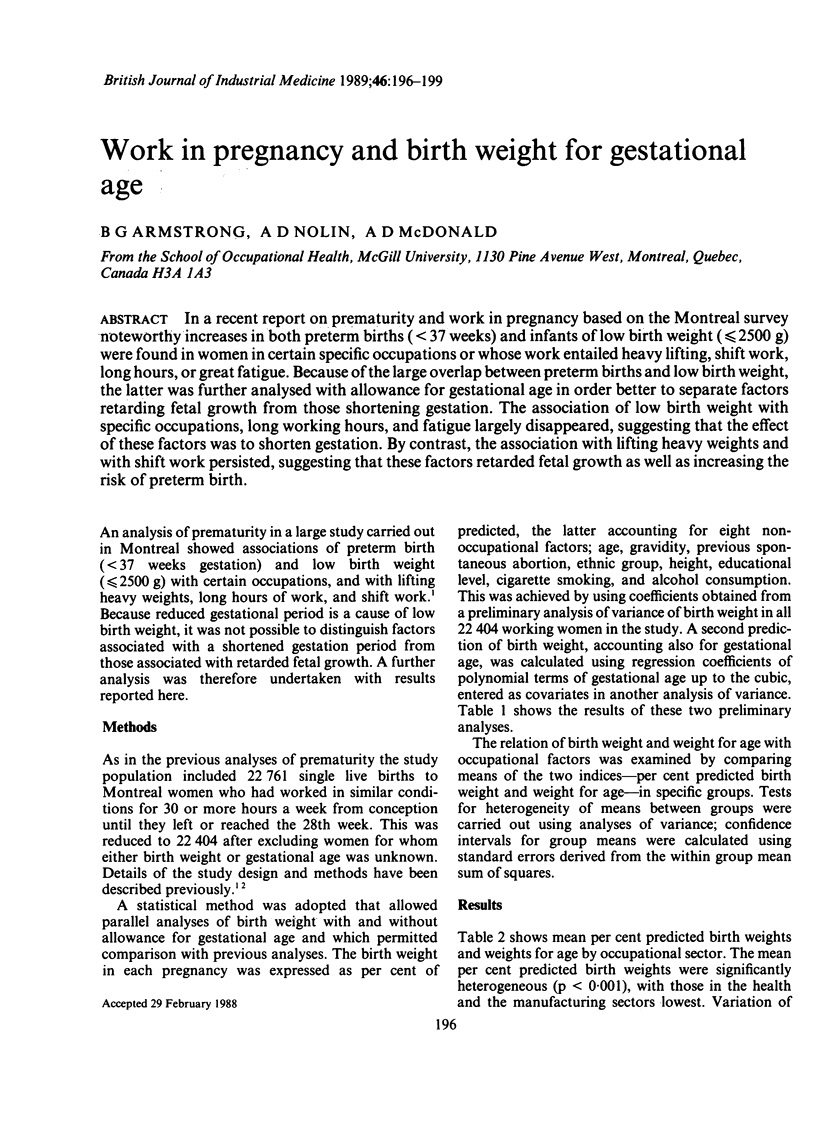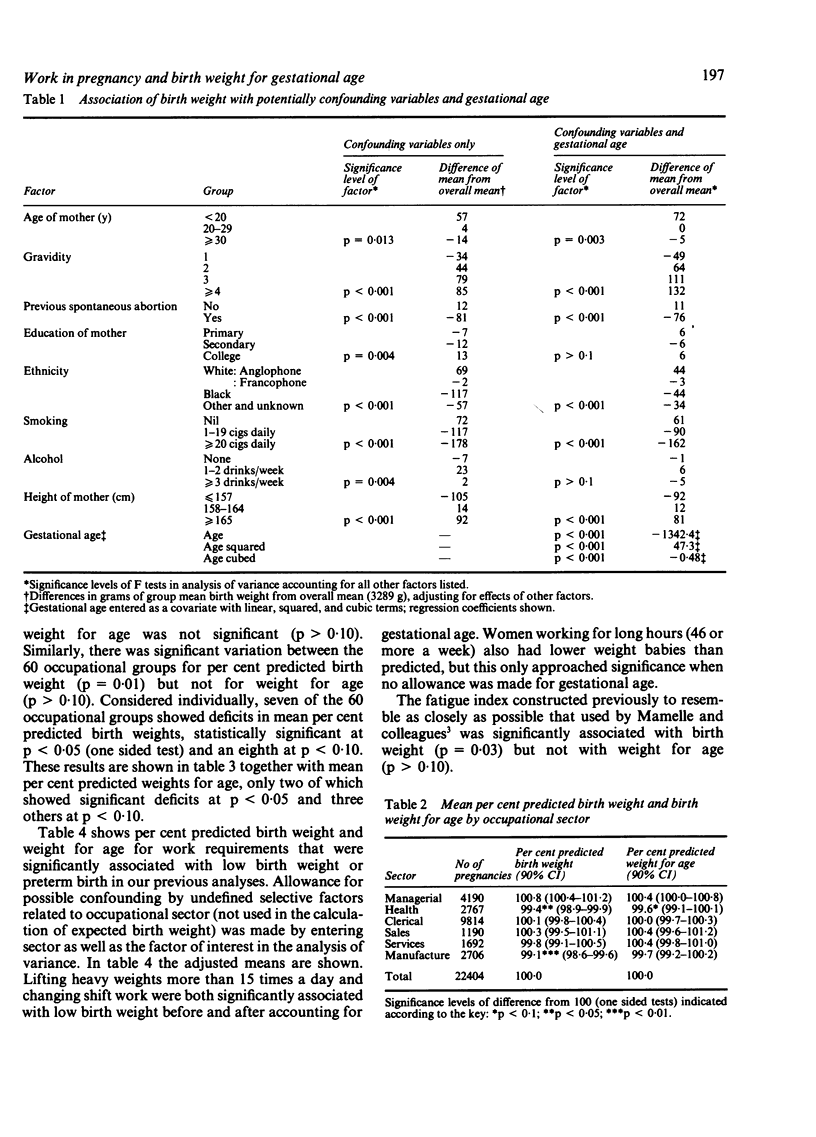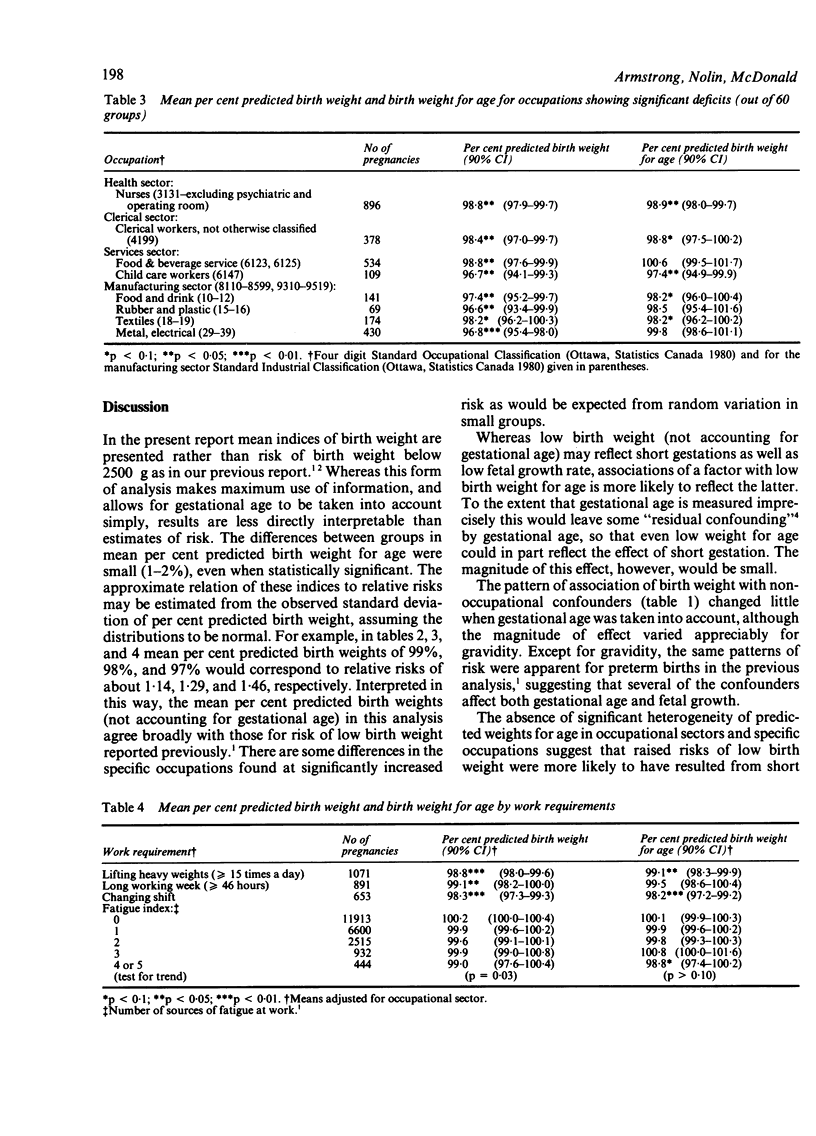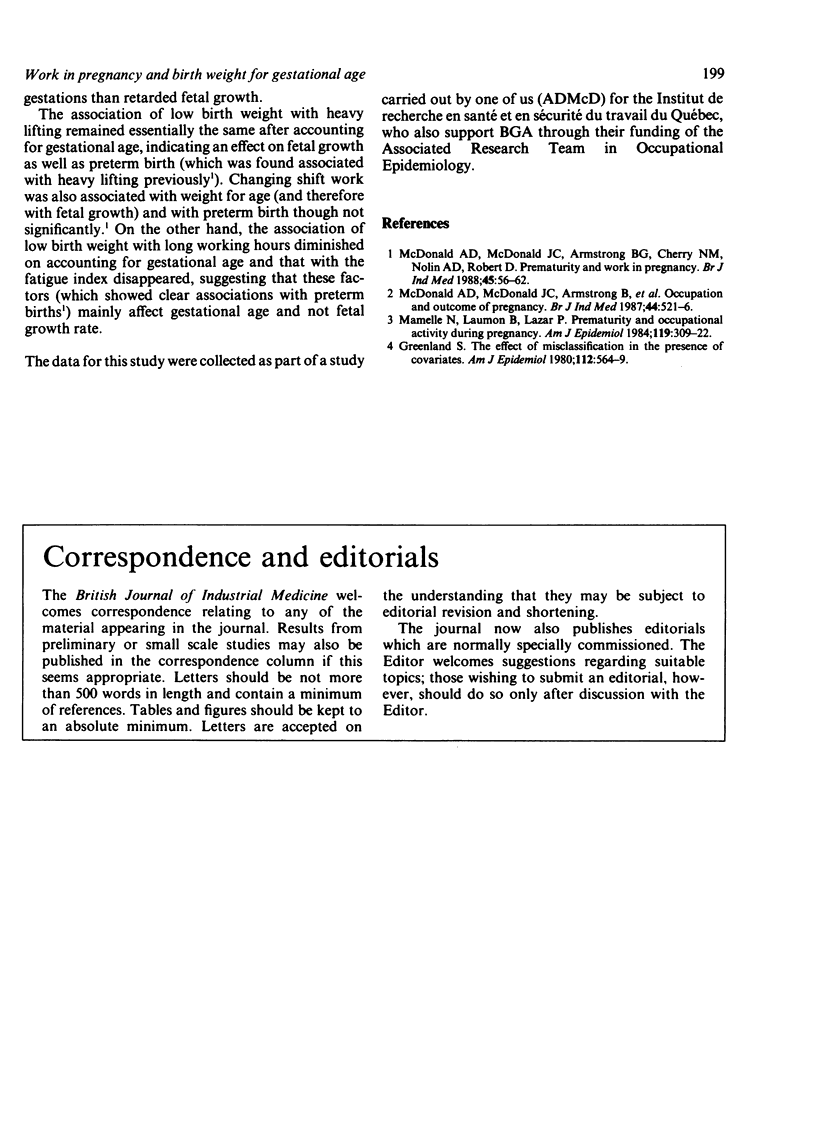Abstract
In a recent report on prematurity and work in pregnancy based on the Montreal survey noteworthy increases in both preterm births (less than 37 weeks) and infants of low birth weight (less than or equal to 2500 g) were found in women in certain specific occupations or whose work entailed heavy lifting, shift work, long hours, or great fatigue. Because of the large overlap between preterm births and low birth weight, the latter was further analysed with allowance for gestational age in order better to separate factors retarding fetal growth from those shortening gestation. The association of low birth weight with specific occupations, long working hours, and fatigue largely disappeared, suggesting that the effect of these factors was to shorten gestation. By contrast, the association with lifting heavy weights and with shift work persisted, suggesting that these factors retarded fetal growth as well as increasing the risk of preterm birth.
Full text
PDF



Selected References
These references are in PubMed. This may not be the complete list of references from this article.
- Greenland S. The effect of misclassification in the presence of covariates. Am J Epidemiol. 1980 Oct;112(4):564–569. doi: 10.1093/oxfordjournals.aje.a113025. [DOI] [PubMed] [Google Scholar]
- Mamelle N., Laumon B., Lazar P. Prematurity and occupational activity during pregnancy. Am J Epidemiol. 1984 Mar;119(3):309–322. doi: 10.1093/oxfordjournals.aje.a113750. [DOI] [PubMed] [Google Scholar]
- McDonald A. D., McDonald J. C., Armstrong B., Cherry N. M., Nolin A. D., Robert D. Prematurity and work in pregnancy. Br J Ind Med. 1988 Jan;45(1):56–62. doi: 10.1136/oem.45.1.56. [DOI] [PMC free article] [PubMed] [Google Scholar]
- McDonald A. D., McDonald J. C., Armstrong B., Cherry N., Delorme C., D-Nolin A., Robert D. Occupation and pregnancy outcome. Br J Ind Med. 1987 Aug;44(8):521–526. doi: 10.1136/oem.44.8.521. [DOI] [PMC free article] [PubMed] [Google Scholar]


